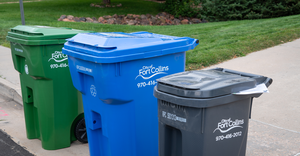Do Consumers Who Say They Prioritize “Green” Products Walk the Talk? Part Two
In Part Two, Cathrine Jansson-Boyd, associate professor in Consumer Psychology at Anglia Ruskin University, Cambridge, U.K., answers questions like: What most drives peoples’ choices? And why would people say one thing and do another when it comes to sustainability?

We routinely hear that consumers demand sustainable products. But do buyers’ choices align with what they say they want? This two-part series delves into consumers’ intentions versus actions around sustainable purchasing.
Part One highlights several studies—including some surprising findings— and advises brands on how to determine what consumers really want and how to engage them. In Part 2 Cathrine Jansson-Boyd, associate professor in Consumer Psychology at Anglia Ruskin University, Cambridge, U.K., answers questions like: What most drives peoples’ choices? And why would people say one thing and do another when it comes to sustainability?
Waste360: It seems peoples’ perceptions about sustainability vary. Why is that?
Jansson-Boyd: When it comes to people’s perceptions about sustainability, we are finding differences based on factors such as culture, age, and product type.
There are those who are suspicious of products marketed as sustainable; they see them as expensive but not necessarily better. Then there are people in tune with green consumption who think it’s the way forward.
In Sweden, research says consumers go along with sustainability, but a huge part of that is that product manufacturers have to conform to regulations. So, people have no other options.
In the United States, research suggests the trend is that you are in tune with certain categories of products that you are wary of. For example, Americans generally perceive sustainable cleaning products as inferior.
Then we see that the Brits are often driven by financial factors. They will pay what they think they can afford, especially at a time when financial hardship is prevalent.
There are also differences depending on age. Older age groups tend to spend their money on sustainable goods, possibly because they can afford it. Whilst younger age groups tend to say that they want to but can’t necessarily afford to buy them.
Waste360: What most drives peoples’ choices?
Jansson-Boyd: Economics is one huge factor. Inflation is a global issue and if you do anything consciously it is to look for inexpensive options, while products marketed as sustainable often cost more.
Convenience is important too. In westernized societies we are so used to having access to products that make our lives easy, and we develop habits around that.
We are also guided by social norms. People replicate what others are doing without asking questions. And smaller places will have a different structure. For instance, in Cambridge we live in a bubble of sorts. One of many norms here is that everyone has their own coffee cup, and if you walk into a café without one you may not be able to get takeaway coffee because not all the shops carry disposable cups.
Beyond Cambridge, across Europe plastic water bottles are frowned upon. People don’t think they are necessary. Like with the coffee cup, they bring their own refillable water bottles.
Waste360: Do people who say they prioritize sustainability walk the talk? If not, what would motivate them to do as they say?
Jansson-Boyd: Most people say in surveys that they would engage in sustainable consumption because it’s important. Though they are not necessarily doing what they say they believe in. Non-sustainable products sell, and they sell well.
But our research shows that if you can get people at the point of purchase to consciously think about what they have to do to align with their stated beliefs, they tend to pick sustainable options.
The challenge is in getting them to stop and think about it when they are shopping. They have limited time to engage and a lot to process. We are driven by colors, brands, previous experiences, and we just grab things as we go.
What else may spur shifts in behavior is new business ideas for green products that people find interesting. air up is an example; it’s a reusable water bottle that became like fashion among kids. You put a scented ring around the bit of the bottle. You smell the flavor and think you are actually drinking it, but it’s just a scent. They are expensive but they sold like hotcakes. I think we will see similar trends that bring change over time as people become more innovative.
Waste360: Tell us about your latest research. What did you learn about what people say versus what they do?
Jansson-Boyd: In my latest research project at the University, we studied how we could try to reduce food waste in British homes because it’s a big problem both in terms of general wastage and CO2 emissions.
Virtually everyone initially said they did not waste food, though that was not the case. People tend to give the answer they think society wants to hear. We all know it’s wrong to waste food, so admitting we do it is embarrassing.
Peoples’ survey responses are also guided by what they believe to be true, though they may not have actually thought about it. We worked with a supermarket in the U.K. to determine if consumers preferred plastic packaging and whether they actually avoided it. Almost everyone said in the beginning that they don’t buy products in plastic packaging. But we found looking at film clips that this was not the case. So, either they give a social desirability answer, or an answer based on what they think they know, unaware that they are buying certain products or packaging without thinking about it because it’s a habit.
Waste360: What are some hot sellers impacting the environment—and why do people buy them up so rapidly, even if they say they want sustainable choices?
Jansson-Boyd: Electronics is a big one. It’s about fashion. It’s not fashionable to have an old phone or old laptop. People want the latest iPhone. It’s almost like a status symbol where Version 8 or 9 is not good enough.
Consumers almost internalize the value of the phone into who they are. I think people need to separate how they view material possessions from how they perceive themselves. If they think, “My iPhone 8 is fine; I can refurbish it,” we will see less manufacturing, which will eventually lead to reduced consumption of natural resources.
We see this with other product categories too, like clothes. And we see it with cosmetics. The industry is saying you can’t be beautiful without makeup. It’s the same with anti-aging products. We are socialized into thinking that we need to buy these things.
Waste360: Who can inspire change? And what’s the real wakeup call?
Jansson-Boyd: We need society to work together and curb the value of consumption. Why can’t I buy a car that’s been driven for 15 years and refurbish it? Why do I need a new Prada coat when I can buy a second-hand coat?
Legislation would help, but we get messages from politicians who sometimes encourage heavy consumption to spur the economy. I think of Winston Churchill who once said, “Remember gentlemen: it's not just France we are fighting for, it's Champagne!” During the economic downturn after the tragedy of 9/11 President Bush told people to fly to Disney World and enjoy other great destinations. We have heard this type of messaging for centuries, placing high value on consumption.
If society is going to do a U-turn in their habits, we need to question why it’s important to wear makeup and fancy clothes and ask, why do we need a new sofa when there’s a little hole in the one we have? Why can’t we patch it?
When people wake up and see the impact on our environment, I think they will have an epiphany moment. And that is probably when we will see change. But I think if people are expected to go cold turkey they will rebel. They need time to phase it out.
About the Author
You May Also Like




